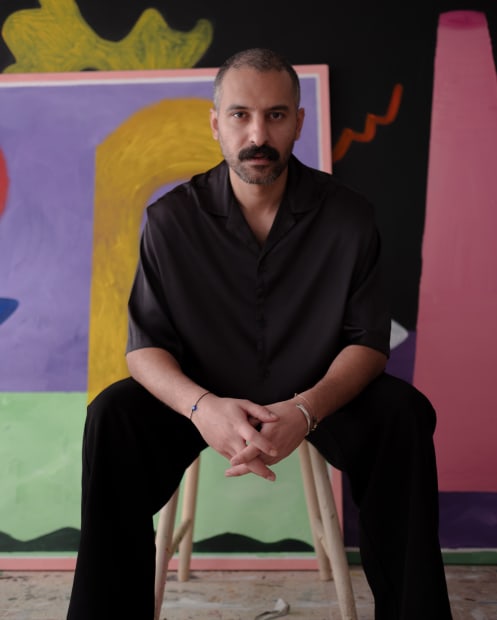-

-
Nasser:
I’m an artist from Saudi Arabia based in Riyadh. My practice focuses on painting, specifically abstraction and expressionism.
Nasser:
I have always been fascinated with psychology. A friend in university introduced me to Jung, and his words resonated deeply with my mental health. Concepts like inner work and shadow work are incredibly sophisticated, challenging me to understand this world more. Jung's words, "Your vision will become clear only when you can look into your own heart. Who looks outside, dreams; who looks inside, awakes," combined with my spiritual journey, particularly in Sufism and the teachings of Rumi, influence my practice of seeking within to find the light.
Nasser:
One of the significant themes in my work, then, is the psyche of human beings and the inner world, approached from spiritual and psychological perspectives. I explore these fields through reading and reflection, channelling these influences into my art.
Nasser:
I believe art has the power to heal the wounds within us. We need more art therapy in our education system, more art in life, more beauty, and more love.
-
Nasser:
My painting technique is simple. I study the colours first, then use my imagination and inner world as a guide. The forms flow onto the canvas, and my relationship with colours is fundamental. I find beauty in colours, which makes me appreciate nature and the tiniest details we witness daily—if we are present and aware of our surroundings and the gifts within our mysterious bodies.
Nasser:
I often find myself reacting from one extreme to the other, seeking to understand the spectrums of life and decision-making.
Nasser:
The forms in my paintings are geometric yet organic, allowing me to dance between these two shapes. The signs and symbols in my work are still being discovered, but they represent my attempts to understand myself and channel the magical universe—sometimes venturing into the void of nothingness and other times into the noise.
Nasser:
Over time, my art has evolved towards more flawless forms and a minimalist approach, which is always challenging for me. It is a journey from chaos to order.
Nasser:
Painting is my meditation, a way to heal and disconnect from the noises around me. It is the only method through which I can truly process my thoughts.
Nasser:
My latest exhibition, In-Between, at Tabari Artspace, explores the fields of the conscious and subconscious and the energies between them. It reflects the endless journey of learning and self-discovery—the more you know, the more you realise how much you don't know.
Nasser:
I want visitors to the exhibition to smile, love, and know themselves more. Hug people more, hug yourself more, and believe in yourself. The most important thing is to be humble.


